The charts that matter: the US dollar strikes back
Janet Yellen’s final meeting as Fed governor was more “hawkish” than expected. So investors got a little bit nervy, says John Stepek.

Welcome to your weekend edition, where we take a look through the charts that matter and catch up on anything else that we missed during the week.
If you missed any of this week's Money Mornings, here are the links you need.
Monday: Forget the Italian election here's the eurozone power shift you really need to fear
MoneyWeek
Subscribe to MoneyWeek today and get your first six magazine issues absolutely FREE

Sign up to Money Morning
Don't miss the latest investment and personal finances news, market analysis, plus money-saving tips with our free twice-daily newsletter
Don't miss the latest investment and personal finances news, market analysis, plus money-saving tips with our free twice-daily newsletter
Tuesday: Beating the market: simple in theory, tough in practice
Wednesday: The one asset I feel tempted to bet on right now
Thursday: The twin beliefs propping up this market are crumbling
Friday: Neil Woodford is buying more AA shares I'd suggest you don't follow him
And we'll have a new podcast up next week (our apologies for missing this week's episode).
This week, it feels as though the market has been taking a pause for thought. The Federal Reserve released the minutes from Janet Yellen's final meeting as governor. Overall, they were a bit more "hawkish" than expected. As a result, investors got a little bit nervy.
So how has that affected the charts?
Gold wasn't enamoured of the idea of higher interest rates. Higher rates are fine as long as "real" rates (interest rates adjusted for inflation) keep falling. But that requires inflation to keep ticking higher. Gold's reaction suggests that markets are not yet convinced that this will happen (although I suspect they're overly gloomy).
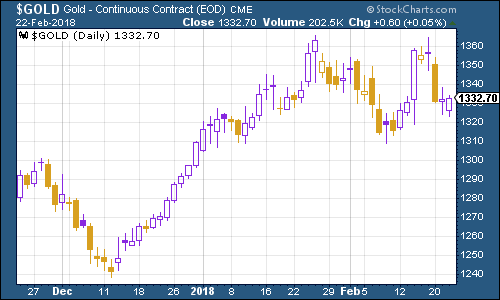
(Gold: three months)
The US dollar index a measure of the strength of the dollar against a basket of the currencies of its major trading partners rebounded somewhat this week, as the minutes persuaded the market that we might see more interest rate hikes than expected this year.

(DXY: three months)
Interestingly however, the yield on the ten-year US Treasury bond was little moved. You'd think that a relaxing of inflation fears might see the yield fall again, but there's also supply to think about - the markets may be concerned about rising US debt, arising from Donald Trump's tax cuts.
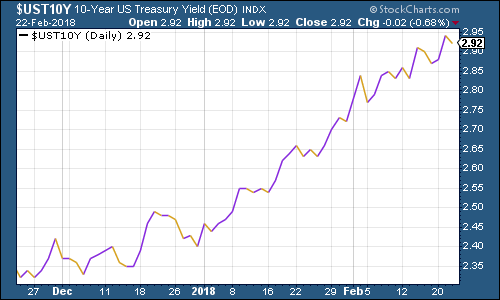
(Ten-year US Treasury: three months)
As for the yield on the ten-year German Bund the borrowing cost of Germany's government, which is Europe's "risk-free" rate it ticked lower, which means that the "spread" (the gap) between US yields and German yields is rising.
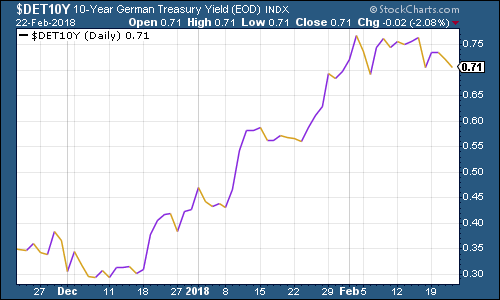
(Ten-year bund yield: three months)
Copper consolidated last week's gains. The stronger dollar would typically be bad for copper but at the same time, investors seem to be growing bullish on raw materials again.
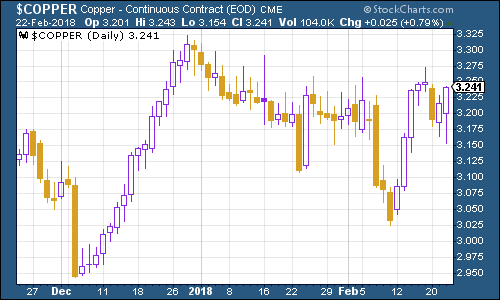
(Copper: three months)
Bitcoin, the king of cryptocurrencies, marched itself up the hill towards the end of the week, and then began to march right down again.
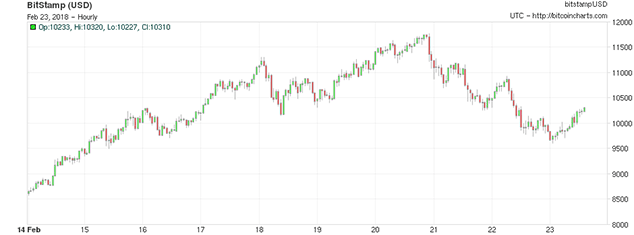
(Bitcoin: ten days)
As for US employment the four-week moving average of weekly US jobless claims, rose to 226,000 this week, while weekly claims came in at 222,000. Claims have now been below the 300,000 level associated with a strong labour market, for the longest period since 1970.
According to David Rosenberg of Gluskin Sheff, when US jobless claims hit a "cyclical trough" (as measured by the four-week moving average), a stockmarket peak is not far behind (on average 14 weeks), and a recession follows about a year later. We hit a fresh cyclical trough two weeks ago, and another could be on the cards if the numbers continue to come in strong.
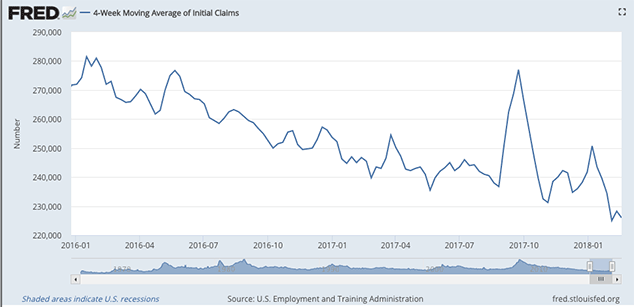
(Four-week moving average of US jobless claims: since start of 2016)
The oil price (as measured by Brent crude, the international/European benchmark) rose strongly this week, despite the headwind from the US dollar.
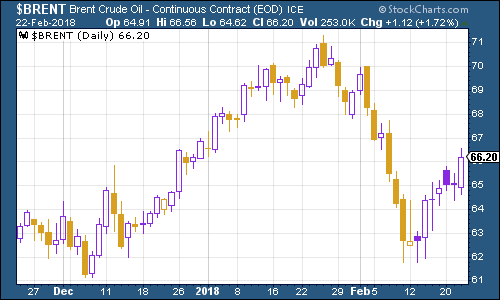
(Brent crude oil: three months)
Meanwhile internet giant Amazon briefly managed to top the $1,500 a share mark this week for the first time. That was partly because Walmart - arguably its main rival - came out with disappointing figures for its own internet business, which investors had grown somewhat over-excited about.
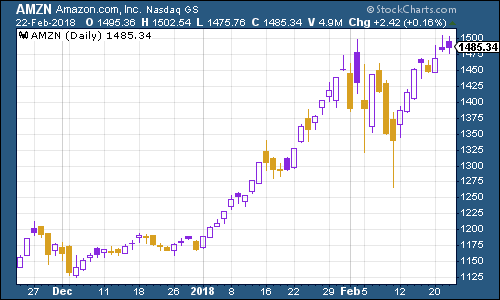
(Amazon: three months)
Meanwhile Tesla continued to make gains after reporting that it is expanding its charging network in China. It really is a company where investors only seem to hear the good news. But it's a fascinating one to watch.
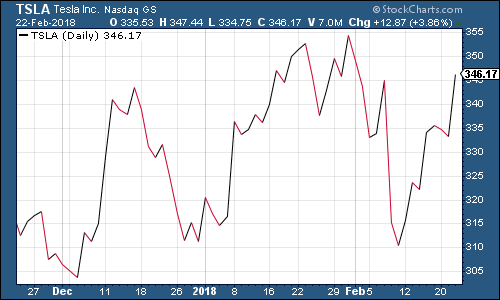
(Tesla: three months)
Get the latest financial news, insights and expert analysis from our award-winning MoneyWeek team, to help you understand what really matters when it comes to your finances.
John Stepek is a senior reporter at Bloomberg News and a former editor of MoneyWeek magazine. He graduated from Strathclyde University with a degree in psychology in 1996 and has always been fascinated by the gap between the way the market works in theory and the way it works in practice, and by how our deep-rooted instincts work against our best interests as investors.
He started out in journalism by writing articles about the specific business challenges facing family firms. In 2003, he took a job on the finance desk of Teletext, where he spent two years covering the markets and breaking financial news.
His work has been published in Families in Business, Shares magazine, Spear's Magazine, The Sunday Times, and The Spectator among others. He has also appeared as an expert commentator on BBC Radio 4's Today programme, BBC Radio Scotland, Newsnight, Daily Politics and Bloomberg. His first book, on contrarian investing, The Sceptical Investor, was released in March 2019. You can follow John on Twitter at @john_stepek.
-
 US stocks: opt for resilience, growth and value
US stocks: opt for resilience, growth and valueOpinion Julian Wheeler, partner and US equity specialist, Shard Capital, highlights three US stocks where he would put his money
-
 The steady rise of stablecoins
The steady rise of stablecoinsInnovations in cryptocurrency have created stablecoins, a new form of money. Trump is an enthusiastic supporter, but its benefits are not yet clear
